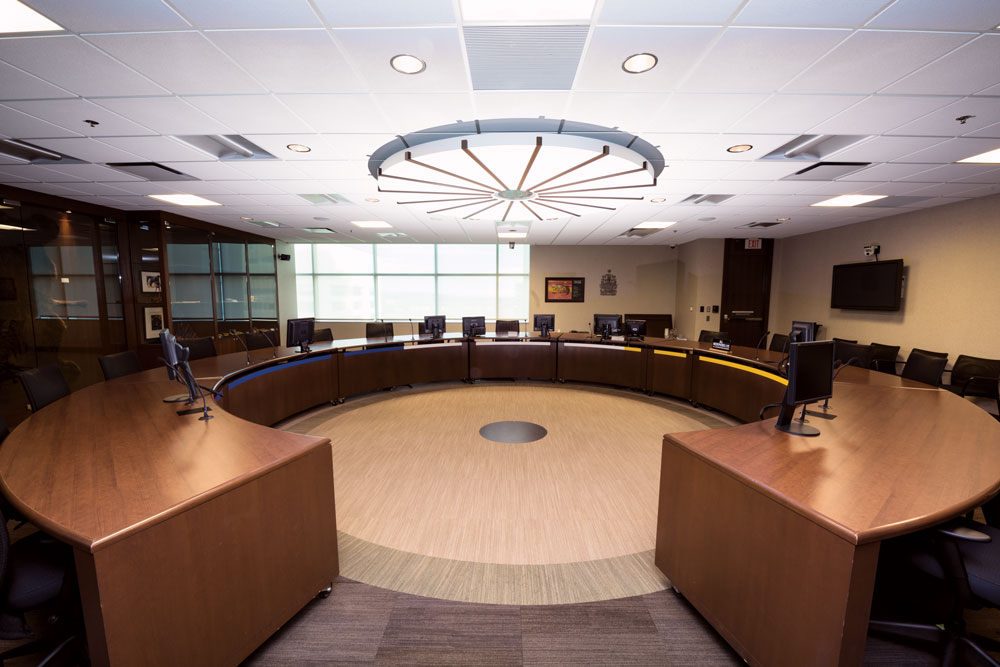Welcoming the Calgary Indigenous Court (CIC)
December 2, 2019 | Indigenous Learning, News, Pathways to Healing, Uncategorized

The Calgary Indigenous Court (CIC) officially opened on September 4, 2019 after 18 months of consultation with Indigenous leaders and stakeholders. Operating weekly, the court will primarily deal with bail and sentencing hearings, concentrating on a restorative justice approach to crime while incorporating Indigenous traditions.
Modelled after a teepee, the courtroom is arranged in a circle, in which judges, victims, offenders, and lawyers sit at the same level so that each party is an equal participant in the judicial process. Four judges with deep ties to First Nations communities preside over the process and include stakeholders, such as Efry, Homefront, Calgary Legal Guidance and Native Counselling Services, to take part in the legal proceedings. Paying homage to Indigenous culture, Alberta Justice provides the option for witnesses to swear their oath with an eagle feather instead of a traditional bible and the courtroom has special ventilation to allow for burning of medicines for special events and ceremony.
Indigenous people are disproportionately represented in both federal and provincial institutions across Canada. Despite only accounting for 4.3% of the total Canadian population, Indigenous adults account for just over 1 in 4 of total admission to provincial and territorial and federal correctional services. Specifically in Alberta, 6.2% of the provincial population is Indigenous, however, current Indigenous incarceration rates in Alberta are unknown as the province has not released this data since 2012. It is the only province in Canada where this information is not publicly available. At the last reporting, Alberta had the most disproportionately high level of Indigenous incarceration and the previous government have acknowledged this overrepresentation.
The CIC is an effort to address these numbers and create alternatives to jail and prison time by implementing recommendations from the Truth and Reconciliation Commission, as well as the Missing and Murdered Indigenous Women and Girls (MMIWG) report. The colonial justice system and Criminal Code itself have not adequately managed crime involving Indigenous people and as a colonial system has not honoured the Indigenous traditions of reconciliation and restorative justice. Judge Eugene Creighton, the provincial court judge that presided over the opening ceremony, discussed the Blackfoot language saying, “We don’t have a word for crime. Our word is mistake.”
With a focus on cultural supports, peacemaking and joining Indigenous clients with the appropriate resources, including Elders, the CIC’s primary goal is restorative justice, rather than punitive justice. Justice Minister Doug Schweitzer stated that the UCP government supports different types of court models. Schweitzer elaborated, “Simply locking people up and throwing away the key is not the path forward, we have to make sure we’re innovative. What’s hurting people, how do we get those issues resolved?” By connecting Indigenous people in vulnerable situations with their community and culture, they find a space where they feel like they belong and the possibility of relapse becomes less likely.